Carole Terwilliger Meyers's Blog, page 5
May 19, 2020
Nagano, Japan: Zenkoji Temple; things to do
Zenkoji Temple Zenko-ji, 10 min. from bullet train station, Nagano City. Always open. Free.
Established in the 7th century--1,400 years ago--this Buddhist temple is one of Japan’s most magnificent and treasured. The temple town of Nagano grew up around it. Zenkoji Temple holds the first Buddhist statue ever brought into Japan. This statue has been “hidden” since 642. People must have faith that it is here, because no one is allowed to see it. However, a replica of the statue is shown to the public during a two-week festival that is held every six years. The next opportunity is in 2022. People come here to ask Buddha to get them to heaven.
The temple approach leading up to the 19th-century Niomon Gate is lined with small restaurants and shops selling local specialties and souvenirs. This outer gate of the temple is guarded by a pair of fearsome Nio guardian figures.
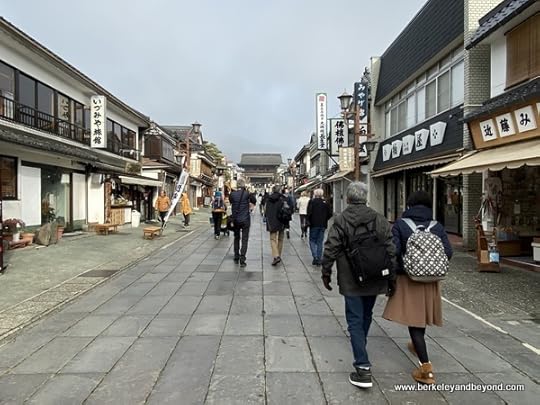 approach to Zenkoji Temple in Nagano City, Japan
approach to Zenkoji Temple in Nagano City, Japan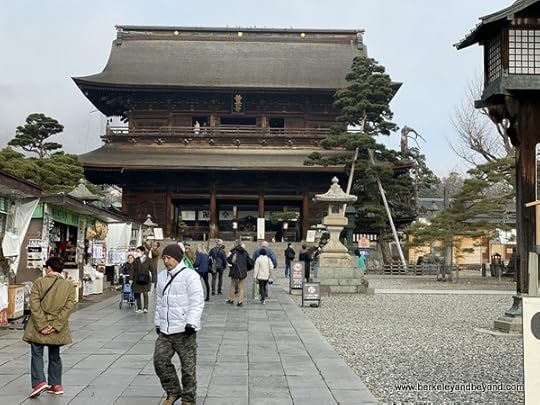 Niomon Gate at Zenkoji Temple in Nagano City, Japan
Niomon Gate at Zenkoji Temple in Nagano City, Japan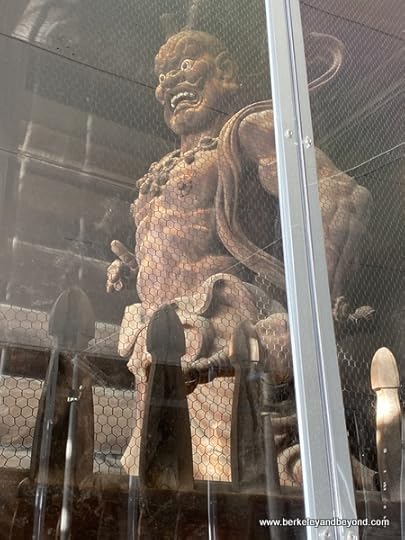 Nio guardian figure at Niomon Gate at Zenkoji Temple in Nagano City, Japan
Nio guardian figure at Niomon Gate at Zenkoji Temple in Nagano City, Japan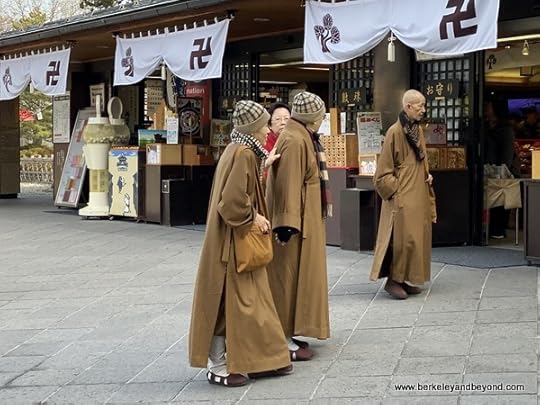 monks shopping outside Niomon Gate at Zenkoji Temple in Nagano City, Japan
monks shopping outside Niomon Gate at Zenkoji Temple in Nagano City, JapanThe courtyard inside houses one large and six medium-size red-hatted statues of Jizo Bodhisattva. They are believed to protect visitors from hungry ghosts and lead them to the six walls to heaven. The courtyard also holds an enormous lion-capped cauldron that emits healing incense, which visitors waft towards parts of their bodies that need healing.
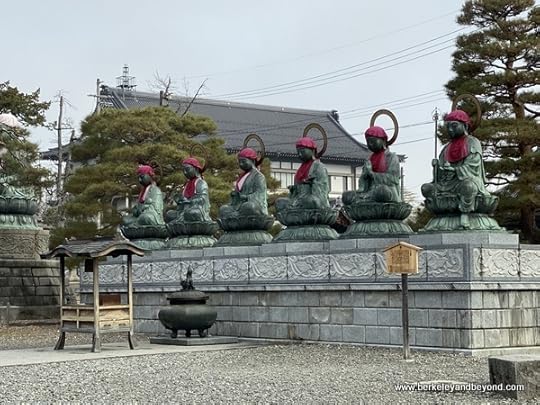 Jizo Bodhisattva statues inside Niomon Gate at Zenkoji Temple in Nagano City, Japan
Jizo Bodhisattva statues inside Niomon Gate at Zenkoji Temple in Nagano City, JapanTo the left of the main gate is a temple with white lanterns called the Daihongan, which houses the residence of the female Buddhist high priestess and also a nunnery. A Buddha that was once thrown into a pond now sits at the bottom of the steps.
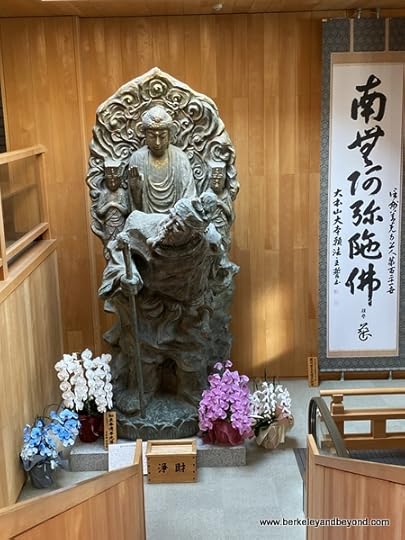 Buddha statue inside Daihongan at Zenkoji Temple in Nagano City, Japan
Buddha statue inside Daihongan at Zenkoji Temple in Nagano City, JapanAlso on the left, the Kyozo houses a 17th-century repository of Buddhist scriptures that resembles the huge prayer wheels seen in the Himalayas. Visitors turn it by pushing with their hands, which is said to bestow enlightenment as if you had chanted the sutras.
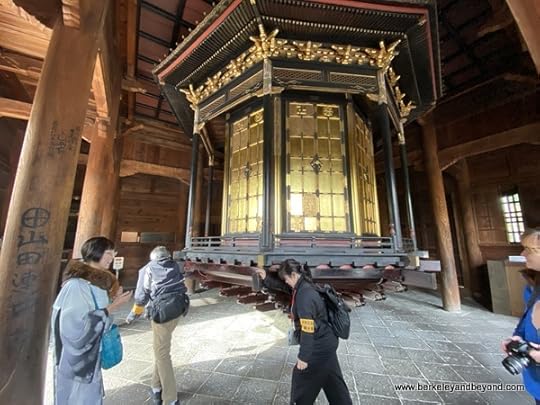 visitors push prayer wheel in Kyozo at Zenkoji Temple in Nagano City, Japan
visitors push prayer wheel in Kyozo at Zenkoji Temple in Nagano City, JapanThe temple’s main, inner Sanmon Gate dates back to 1750. For a small fee, you can climb the gate to its second story for an overview of the temple approach.
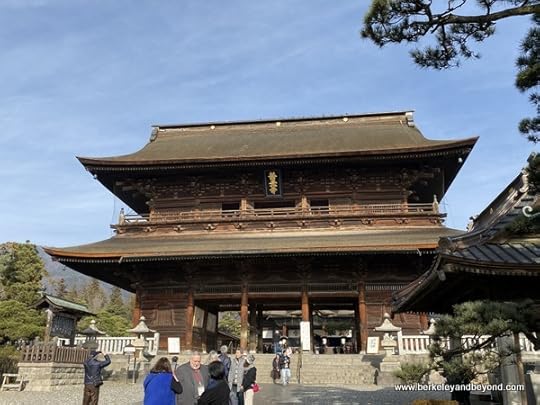 Sanmon Gate at Zenkoji Temple in Nagano City, Japan
Sanmon Gate at Zenkoji Temple in Nagano City, JapanRebuilt most recently in 1707, the Zenkoji temple building is one of Japan’s largest wooden temples. Its ornate main hall displays an assortment of Buddhist statues. As you enter the main temple building, look out for Obinzuru-sama, a seated wooden monk statue that has been worn smooth over the years from visitors rubbing the part of it that ails them in their own body with the hope of absorbing its healing properties. A fee (500 yen, includes history museum) is charged to enter the hall's inner chamber to get a closer look at the temple's main altar. It includes entering an underground passage beneath the inner chamber that visitors walk through in complete darkness in search of the "key to paradise." Visitors run their hand along the wall on their right so they can caress the key that is believed to grant salvation to anyone who touches it. Walking the pitch black passage symbolizes that all people are created equal, and that as they pass through darkness into light they are reborn, become pure, and start a new life.
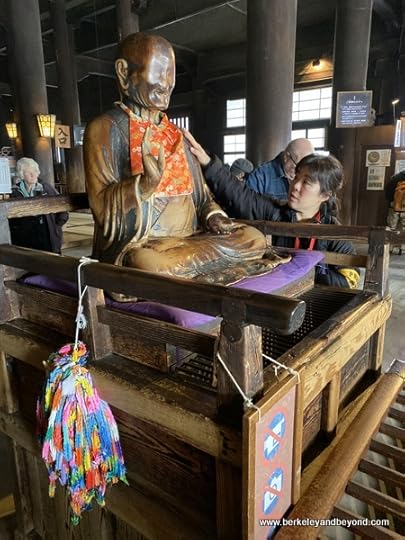 woman places hand on shoulder of Obinzuru-sama at Zenkoji Temple
woman places hand on shoulder of Obinzuru-sama at Zenkoji Templein Nagano City, Japan
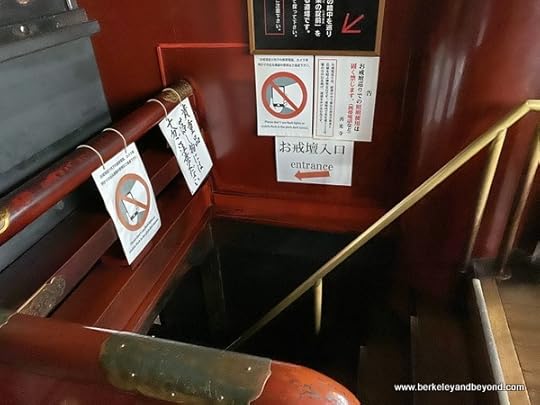 entrance to subterranean passage at Zenkoji Temple in Nagano City, Japan
entrance to subterranean passage at Zenkoji Temple in Nagano City, JapanStatues of the Monju Bodhisattva and the four heavenly kings (Shitenno) are kept in the temple but not available for viewing.
A recently built pagoda housing the Zenkoji History Museum is a short walk behind the main hall. This Buddha museum showcases a collection of intricately carved statues of Buddha and Bodhisattvah. It also displays 100 Rakan, the disciples of Buddha.
More than 35 small temple lodgings (shukubo) line the streets running parallel to the main temple. Staying in these popular accommodations allows guests to visit the temple at sunrise to participate in the daily 5:30 a.m. morning service (Oasaji). Participants then receive blessings from a top priest or priestess and experience the ceremonies enhanced with bells, incense, and chanting.
It is traditional in Japan for people to maintain a special temple book in which a page is stamped during each temple visit (the fee for stamping is US$3 to US$5).
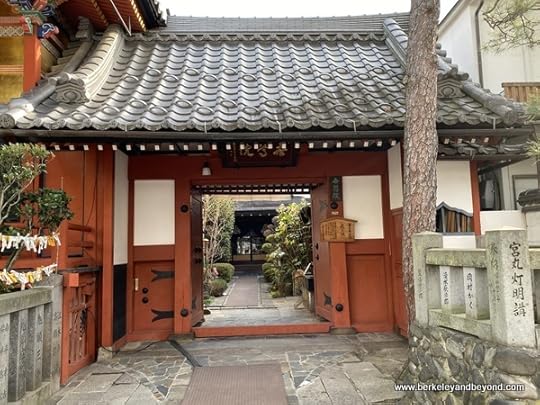 a temple lodging outside Zenkoji Temple in Nagano City, Japan
a temple lodging outside Zenkoji Temple in Nagano City, Japan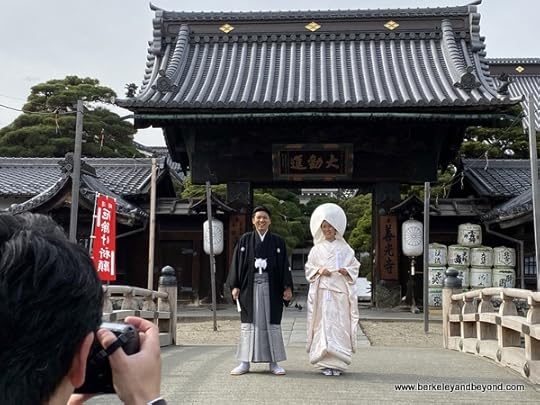 a bridal couple poses for pictures outside Zenkoji Temple in Nagano City, Japan
a bridal couple poses for pictures outside Zenkoji Temple in Nagano City, JapanThis area is the birthplace of Shichimi Pepper (Nichimi Pepper). Once known as "Doctor Town," Edo is home to many doctors and drug wholesalers, Long ago, chili peppers and herbal medicines were used for healing throughout the area. They were often sold outside temples and shrines, and eventually spread throughout Japan.
The pristine, elegant Hachimanya Isogoro pepper shop (83 Daimoncho, Nagano City; www.yawataya.co.jp. 9:00 am to 6:30 pm.) specializes in popular local pepper blends using spices that are unique to Japan. For instance, the Nanami Chili (seven-colored chili) blend consists of seven kinds of chili, baked chili, black sesame, sansho, cinnamon, poppy seed, and hemp seed. Chili peppers add depth to the spiciness and are enhanced by the flavor of fragrant Japanese pepper and sesame. The most popular pepper blend is Shichimi Togarashi, which has been made for more than 280 years and features the unforgettable taste of shinshu. It is made with white ginger, shiso, sansho (a Japanese pepper), chimpi (dried mandarin orange), bansho (hot chili pepper), black sesame, and hemp seeds. All of the ingredients are produced with a unique manufacturing method dating to ancient times. I sprinkle the mix from my colorful little tin onto my morning egg, and it provides a fragrant punch of color.
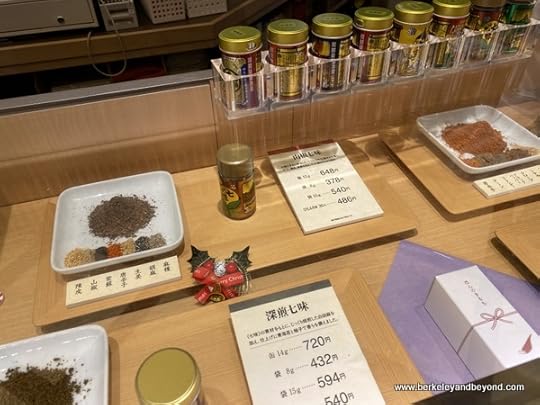 Shichimi Pepper display at Hachimanya Isogoro pepper shop
Shichimi Pepper display at Hachimanya Isogoro pepper shopoutside Zenkoji Temple in Nagano City, Japan
Located just a few blocks down from the temple, lovely little Yamabuki (55-1 Daimoncho, Nagano; http://yamabuki.px2.jp/index.html) is the perfect spot for a relaxing lunch, It offers an enticing seasonal menu, and everything I sampled was attractively presented and delicious.
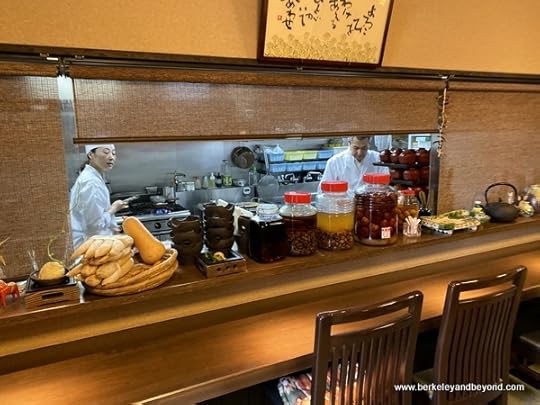 kitchen at Yamabuki restaurant near Zenkoji Temple in Nagano City, Japan
kitchen at Yamabuki restaurant near Zenkoji Temple in Nagano City, Japan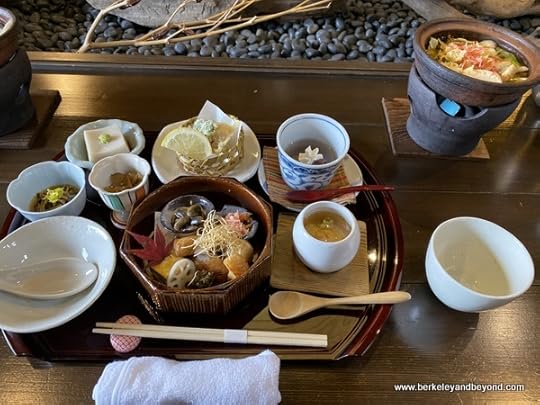 set meal at Yamabuki restaurant near Zenkoji Temple in Nagano City, Japan
set meal at Yamabuki restaurant near Zenkoji Temple in Nagano City, Japan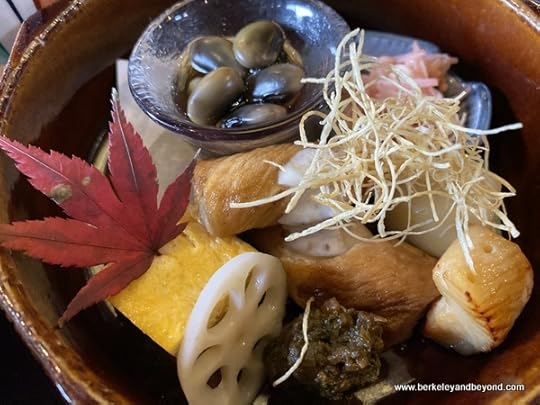 artistic appetizer plate at Yamabuki restaurant near Zenkoji Temple in Nagano City, Japan
artistic appetizer plate at Yamabuki restaurant near Zenkoji Temple in Nagano City, Japan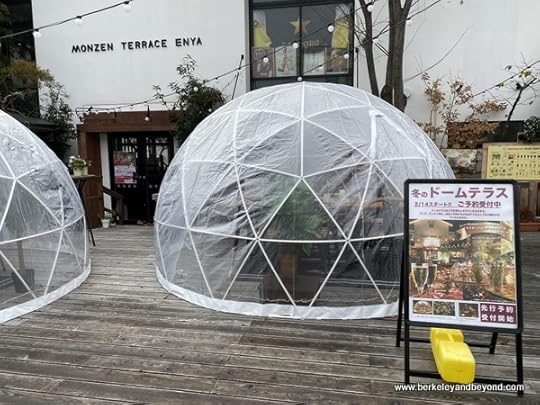 interesting dining chamber perfect for distancing in a pandemic,
interesting dining chamber perfect for distancing in a pandemic, spotted pre-pandemic nearby Zenkoji Temple in Nagano City, Japan
More things to do in Japan.
Great ideas for travel adventures in California and the U.S. and around the world.
images and video ©2020 Carole Terwilliger Meyers
Published on May 19, 2020 13:35
May 6, 2020
Nagano, Japan: Jigokudani Yaen-Koen Snow Monkey Park; things to do
Jigokudani Yaen-Koen Snow Monkey Park
6845 Hirao, Yamanouchi-machi, Shimotakai-gun, Nagano, 0269-33-4379. Daily 9am-4pm. 800 yen, child 400 yen.
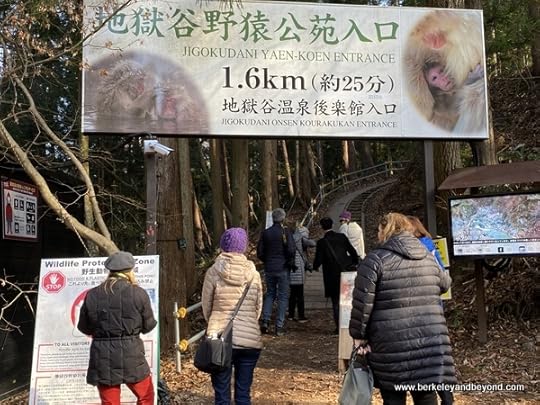 entry to Jigokudani Yaen-Koen Snow Monkey Park in Nagano, Japan
entry to Jigokudani Yaen-Koen Snow Monkey Park in Nagano, Japan
This is the only place in the world where wild snow monkeys lounge in hot springs. They do this in the cold winter months to keep warm. In good weather, they generally do not enter the water but instead sunbathe. The highly social red-faced monkeys--Japanese macaques--live in troops on the mountain at the top of the park. They are indigenous to Japan only, where they are spread throughout the land, and they are the world’s northernmost non-human wild primate as well as the only monkey that lives in extreme cold weather.
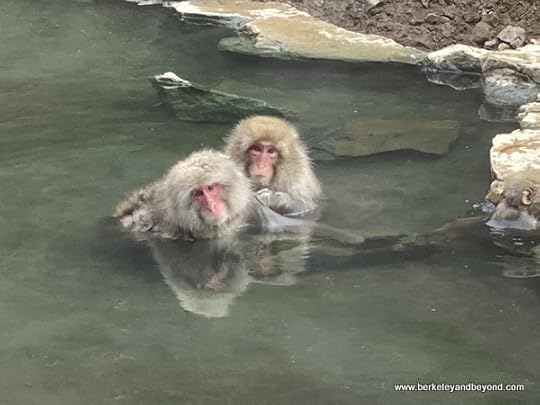 Japanese snow monkeys in hot springs in Jigokudani Yaen-Koen Snow Monkey Park in Nagano, Japa
Japanese snow monkeys in hot springs in Jigokudani Yaen-Koen Snow Monkey Park in Nagano, Japa
It is somewhat controversial that they come to this park regularly for food, but the decision was made to control them with food rather than fences. My visiting group had been warned that they don’t always show up, but on the day I went they were out in droves and so were the visitors. The monkeys are quite active, with the dominant male chasing the others or just giving them a warning snarl to start them running away. The monkeys are not afraid of humans and will walk right past you. The best policy is not to touch them, but instead just to observe. You’ll notice they are constantly grooming each other, picking out lice.
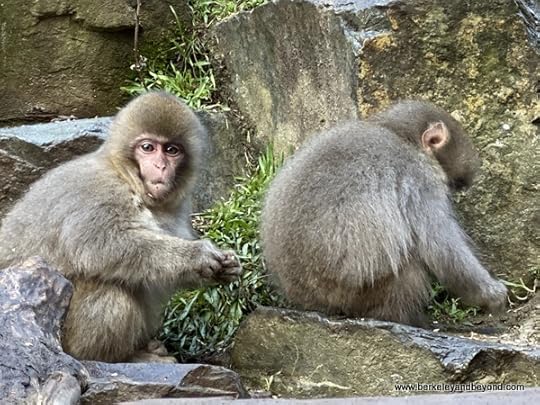 Japanese snow monkey babies in Jigokudani Yaen-Koen Snow Monkey Park in Nagano, Japan
Japanese snow monkey babies in Jigokudani Yaen-Koen Snow Monkey Park in Nagano, Japan
But this whole production is very small compared to other attractions--maybe 100 people and as many monkeys. The walk in takes around a half-hour, unless you are young and anxious. I enjoyed taking my time walking the wide dirt trail through tall trees, doing some serene forest bathing (this practice is known in Japan as shinrin-yoku). A small canal added water sounds at the beginning, but later the water sounds came from thermal streams seen rushing way down in a gorge. Depending on the season and weather, the trail can be muddy or slippery with snow and ice. Though snow is removed from the trails and anti-slip solvent is used, a waterproof boot is a good choice for footwear. In late fall I found it muddy in parts, but with no snow.
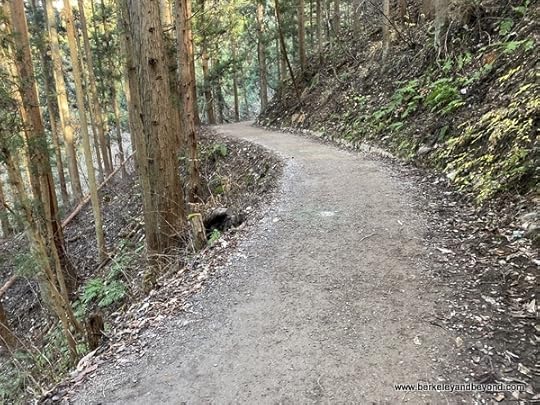 path leading to Jigokudani Yaen-Koen Snow Monkey Park in Nagano, Japan
path leading to Jigokudani Yaen-Koen Snow Monkey Park in Nagano, Japan
The actual entrance to the park is up some steps--about 30--and then through a visitor center where you pay admission. Just beyond is the main hot spring. Note that it is monitored by a web cam. This was especially exciting for me because I began one of my websites with a reference to this very web cam, which is one of the best-maintained I’ve come across. See my blog post about the snow monkey webcam here.
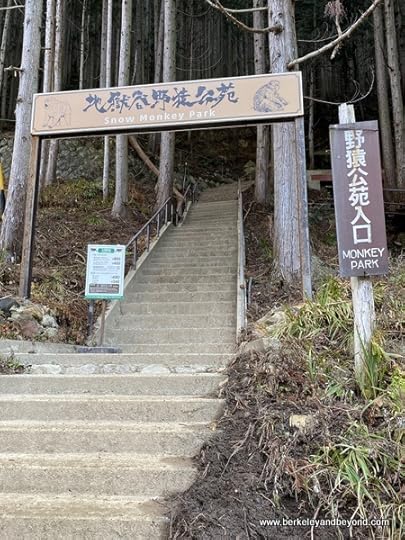 entrance to Jigokudani Yaen-Koen Snow Monkey Park in Nagano, Japan
entrance to Jigokudani Yaen-Koen Snow Monkey Park in Nagano, Japan
As I left the park for the entrance at about 3:30 p.m., I was surprised to see many more people walking in so late in the day. Noted that it takes about a half-hour to walk each way in and out, and restrooms are available at the beginning and end of the trail.
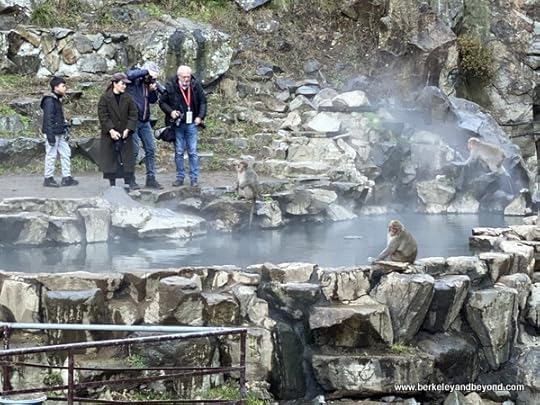 hot spring at Jigokudani Yaen-Koen Snow Monkey Park in Nagano, Japan
hot spring at Jigokudani Yaen-Koen Snow Monkey Park in Nagano, Japan
More things to do in Japan.
Great ideas for travel adventures in California and the U.S. and around the world.
images and video ©2020 Carole Terwilliger Meyers
 entry to Jigokudani Yaen-Koen Snow Monkey Park in Nagano, Japan
entry to Jigokudani Yaen-Koen Snow Monkey Park in Nagano, JapanThis is the only place in the world where wild snow monkeys lounge in hot springs. They do this in the cold winter months to keep warm. In good weather, they generally do not enter the water but instead sunbathe. The highly social red-faced monkeys--Japanese macaques--live in troops on the mountain at the top of the park. They are indigenous to Japan only, where they are spread throughout the land, and they are the world’s northernmost non-human wild primate as well as the only monkey that lives in extreme cold weather.
 Japanese snow monkeys in hot springs in Jigokudani Yaen-Koen Snow Monkey Park in Nagano, Japa
Japanese snow monkeys in hot springs in Jigokudani Yaen-Koen Snow Monkey Park in Nagano, JapaIt is somewhat controversial that they come to this park regularly for food, but the decision was made to control them with food rather than fences. My visiting group had been warned that they don’t always show up, but on the day I went they were out in droves and so were the visitors. The monkeys are quite active, with the dominant male chasing the others or just giving them a warning snarl to start them running away. The monkeys are not afraid of humans and will walk right past you. The best policy is not to touch them, but instead just to observe. You’ll notice they are constantly grooming each other, picking out lice.
 Japanese snow monkey babies in Jigokudani Yaen-Koen Snow Monkey Park in Nagano, Japan
Japanese snow monkey babies in Jigokudani Yaen-Koen Snow Monkey Park in Nagano, JapanBut this whole production is very small compared to other attractions--maybe 100 people and as many monkeys. The walk in takes around a half-hour, unless you are young and anxious. I enjoyed taking my time walking the wide dirt trail through tall trees, doing some serene forest bathing (this practice is known in Japan as shinrin-yoku). A small canal added water sounds at the beginning, but later the water sounds came from thermal streams seen rushing way down in a gorge. Depending on the season and weather, the trail can be muddy or slippery with snow and ice. Though snow is removed from the trails and anti-slip solvent is used, a waterproof boot is a good choice for footwear. In late fall I found it muddy in parts, but with no snow.
 path leading to Jigokudani Yaen-Koen Snow Monkey Park in Nagano, Japan
path leading to Jigokudani Yaen-Koen Snow Monkey Park in Nagano, JapanThe actual entrance to the park is up some steps--about 30--and then through a visitor center where you pay admission. Just beyond is the main hot spring. Note that it is monitored by a web cam. This was especially exciting for me because I began one of my websites with a reference to this very web cam, which is one of the best-maintained I’ve come across. See my blog post about the snow monkey webcam here.
 entrance to Jigokudani Yaen-Koen Snow Monkey Park in Nagano, Japan
entrance to Jigokudani Yaen-Koen Snow Monkey Park in Nagano, JapanAs I left the park for the entrance at about 3:30 p.m., I was surprised to see many more people walking in so late in the day. Noted that it takes about a half-hour to walk each way in and out, and restrooms are available at the beginning and end of the trail.
 hot spring at Jigokudani Yaen-Koen Snow Monkey Park in Nagano, Japan
hot spring at Jigokudani Yaen-Koen Snow Monkey Park in Nagano, JapanMore things to do in Japan.
Great ideas for travel adventures in California and the U.S. and around the world.
images and video ©2020 Carole Terwilliger Meyers
Published on May 06, 2020 13:13
April 15, 2020
San Antonio, Texas: Ruby City; things to do
Ruby City 150 Camp St. Free. Thur 12-8pm, Fri–Sun 12-6pm. Free parking.
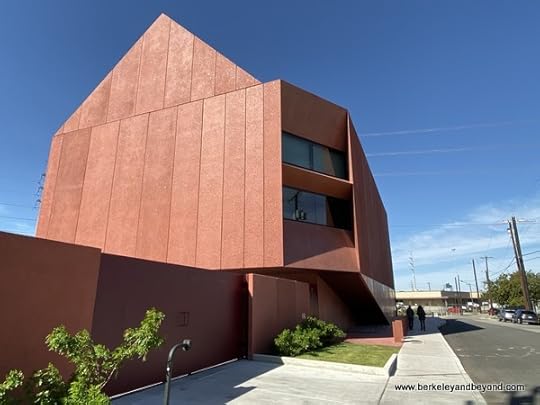 shimmering crimson exterior of Ruby City art museum in San Antonio, Texas
shimmering crimson exterior of Ruby City art museum in San Antonio, TexasDesigned by award winning architect Sir David Adjaye, this small jewel box of a contemporary art museum opened in late 2019. What was once the personal collection of the late Linda Pace—a local philanthropist and heiress to a San Antonio hot sauce fortune--includes more than 900 paintings, sculptures, installations, and video works that are heavy with local artists. The name references the exterior crimson coloring of the shimmering building. Viewing the entire displayed collection and the park across the street takes under two hours.
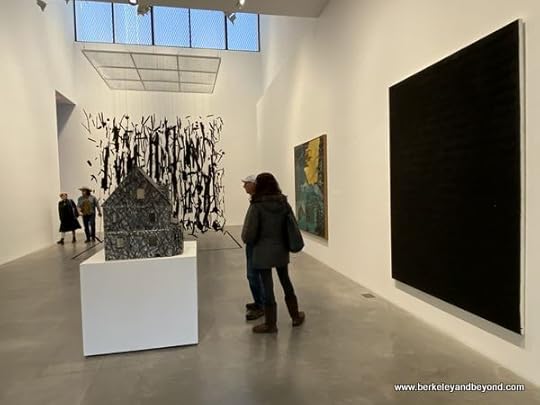 gallery at Ruby City art museum in San Antonio, Texas
gallery at Ruby City art museum in San Antonio, Texas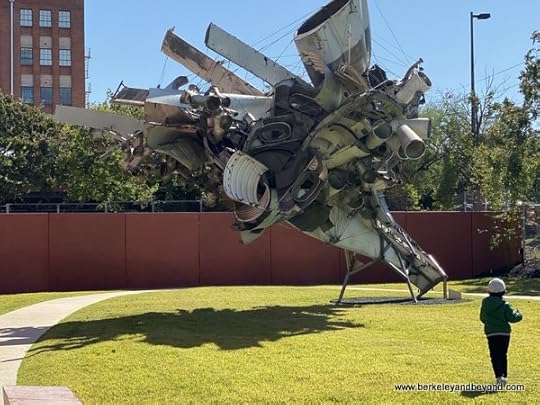 outdoor sculpture garden at Ruby City art museum in San Antonio, Texas
outdoor sculpture garden at Ruby City art museum in San Antonio, TexasChris Park 111 Camp St. Tu–Sun 9am-6pm, Thur to 8pm. Located across the street, this 1-acre public green space celebrates the life of Christopher Goldsbury, the son of late artist Linda Pace. The park features walkways with glass “jewels” embedded in the concrete, and its lush foliage includes a mix of exotic species with those from south Texas--think a beautiful Hong Kong Orchid tree and a multi-variety Agave Garden. Outdoor art, benches, and the small Ruby City Studio gallery round things out.
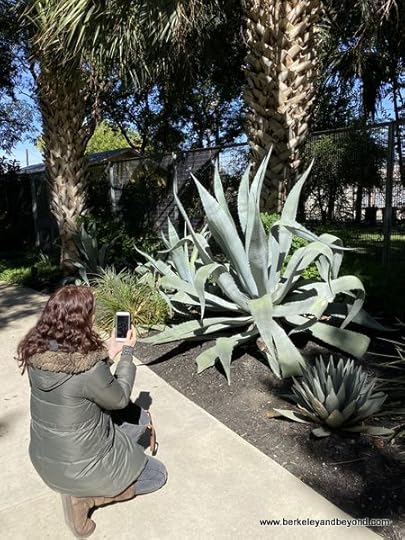 giant agave plant at Christ Park in San Antonio, Texas
giant agave plant at Christ Park in San Antonio, TexasMore things to do in San Antonio.
Great ideas for travel adventures in California and the U.S. and around the world.
images ©2020 Carole Terwilliger Meyers
Published on April 15, 2020 13:05
April 9, 2020
Alpine, West Texas: Big Bend Cowboy Church; things to do
Big Bend Cowboy Church (432) 364-2822, (254) 631-8582.
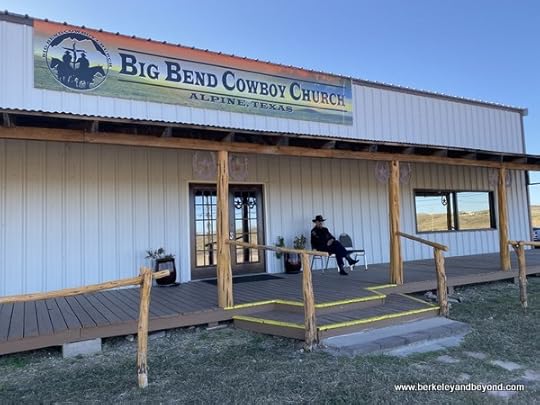 exterior of Big Bend Cowboy Church in Alpine, Texas
exterior of Big Bend Cowboy Church in Alpine, Texas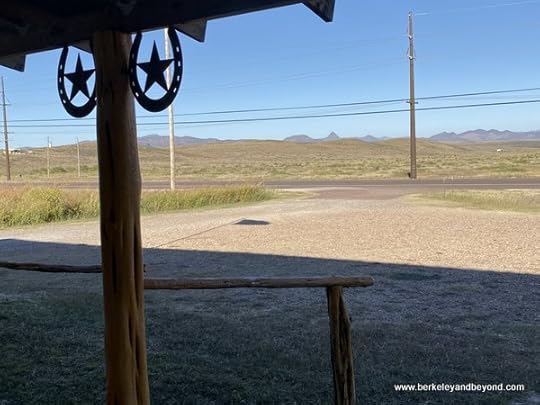 view from front porch of Big Bend Cowboy Church in Alpine, Texas
view from front porch of Big Bend Cowboy Church in Alpine, TexasFolks who attend this isolated Cowboy Church come from parts all around. They tend to be ranchers who lead isolated lives and yearn for fellowship. The website promises that "drty boots, jeans, and hats are always welcome!" Parishioners and visitors are welcomed with coffee, donuts, and genuine warmth. Operating for five years, the good-sized fellowship is affiliated most closely with Baptist beliefs. The service includes a live country band playing what amounts to a western music concert, and an inspirational sermon--when I attended it was on the subject of feuds. Situated inside a gigantic one-room space that is a former woolen mill, big garage doors open wide here to the rustic hillside scenery outside. Floors are cement, chairs are comfortably padded, and a horse water trough is used for baptisms. Folks with dogs and toddlers sit in the back at picnic tables where they can move freely. Though I was expecting some horses to be tied up to the hitching post out front, the parking lot was filled with American-made pickups.
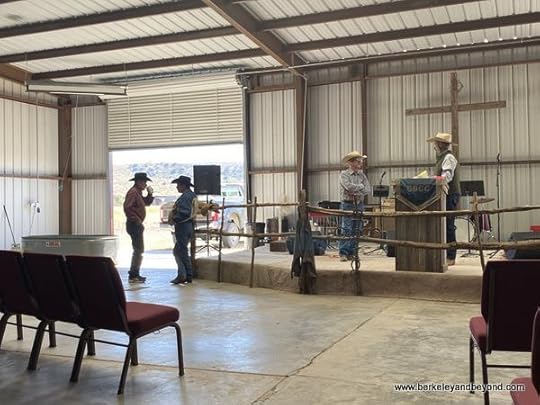 congregation gathers at Big Bend Cowboy Church in Alpine, Texas
congregation gathers at Big Bend Cowboy Church in Alpine, Texas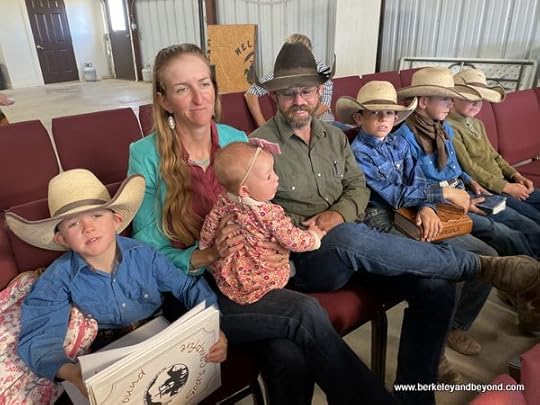 cowboy family at Big Bend Cowboy Church in Alpine, Texas
cowboy family at Big Bend Cowboy Church in Alpine, Texas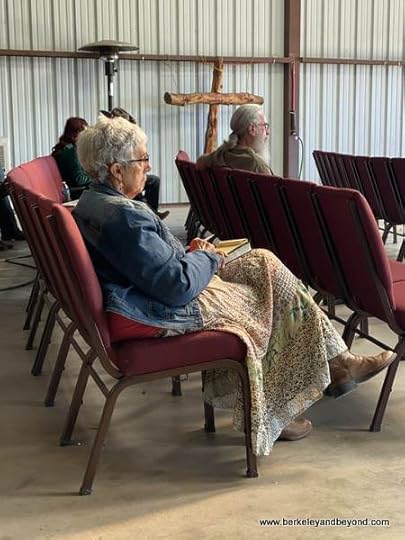 congregants at Big Bend Cowboy Church in Alpine, Texas
congregants at Big Bend Cowboy Church in Alpine, Texas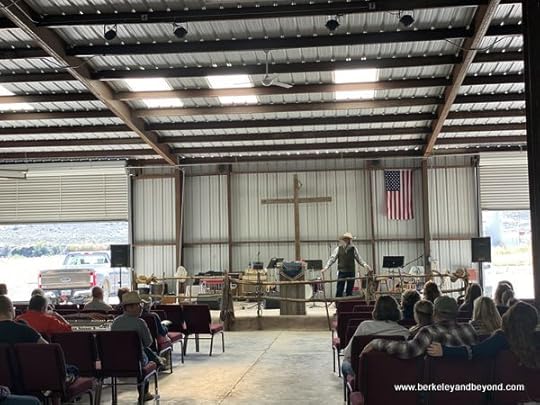 congregation at Big Bend Cowboy Church in Alpine, Texas
congregation at Big Bend Cowboy Church in Alpine, Texas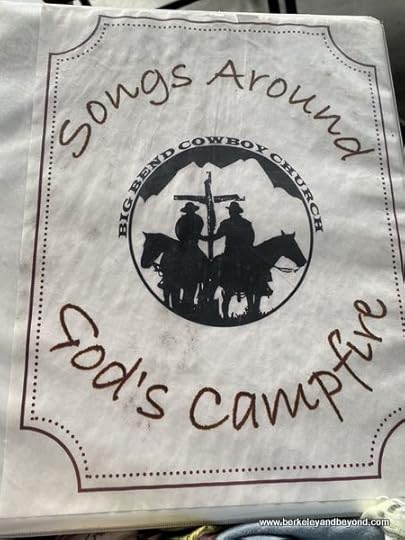 song book at Big Bend Cowboy Church in Alpine, Texas
song book at Big Bend Cowboy Church in Alpine, TexasItinerary for road trip through West Texas.
Things to do in El Paso.
Great ideas for travel adventures in California and the U.S. and around the world.
images ©2020 Carole Terwilliger Meyers
Published on April 09, 2020 13:34
April 2, 2020
Marathon, West Texas: Gage Hotel & Gardens complex; hotel review; restaurant reviews; things to do
Gage Hotel & Gardens 102 NW 1st St-Hwy 90 W., (432) 386-4205. Pool; full-service health spa.
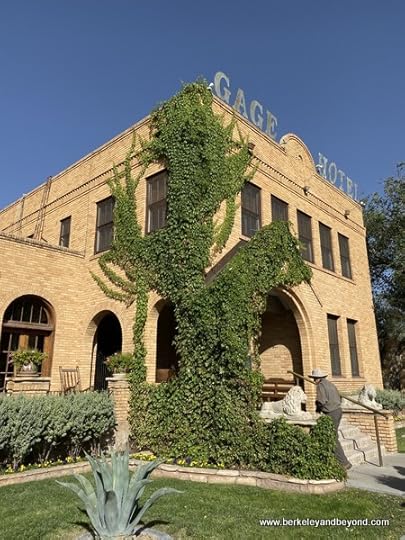 exterior of Gage Hotel in Marathon, Texas
exterior of Gage Hotel in Marathon, TexasBuilt in 1927, this high-end historic hotel today displays is the place to stay in this tiny town. It is claimed that the owner has the largest memorabilia collection in the world, which is quite believable given the immensely interesting variety of items displayed throughout the property. The lobby is definitely worth passing some time in.
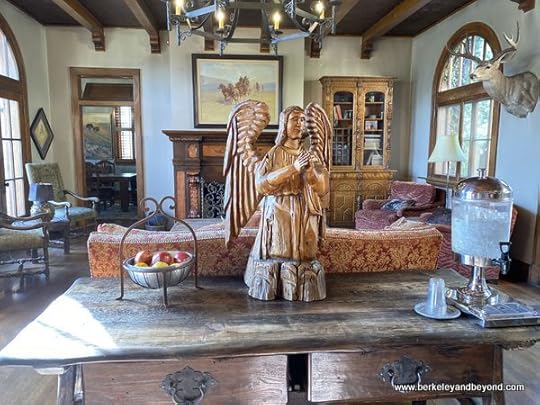 lobby at Gage Hotel in Marathon, Texas
lobby at Gage Hotel in Marathon, Texas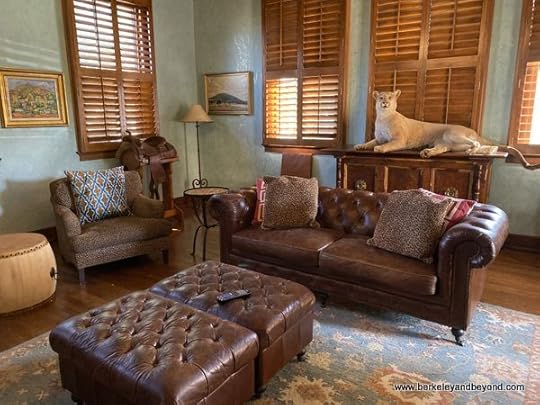 lobby at Gage Hotel in Marathon, Texas
lobby at Gage Hotel in Marathon, TexasRoom 10 in the main hotel is reputedly haunted, but a first-hand report says no paranormal activity occurred and the bed was super comfy.
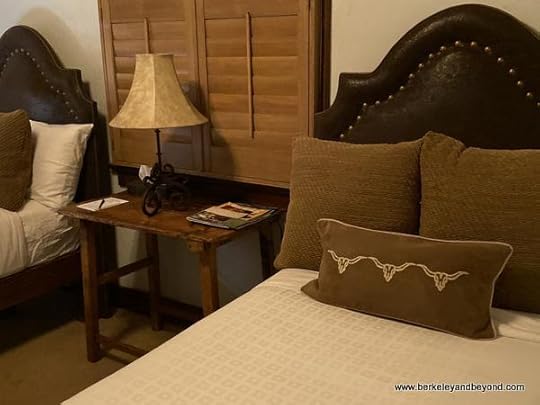 guest room at Gage Hotel in Marathon, Texas
guest room at Gage Hotel in Marathon, TexasThe Los Portales, or “porches,” section of the hotel features adobe brick buildings that replicate the primitive indigenous building styles of the area. Configured around a courtyard, these atmospheric guest rooms are equipped with fireplaces to chase away any chill. Units incorporate very old handmade windows and mesquite doors salvaged from Mexico. Saltillo clay floor tiles and hand-painted Talavera tiles, also from Mexico, are used throughout. These 20 guest rooms share a pool.
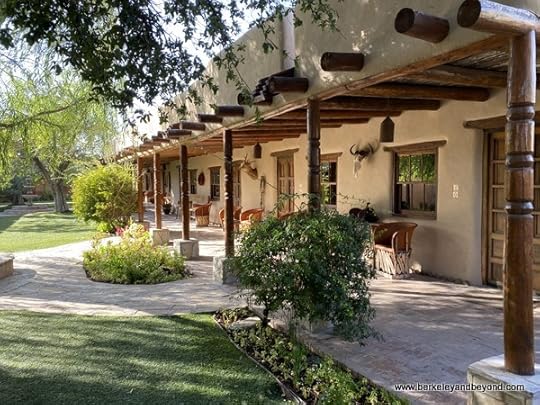 exterior of Los Portales section at Gage Hotel in Marathon, Texas
exterior of Los Portales section at Gage Hotel in Marathon, Texas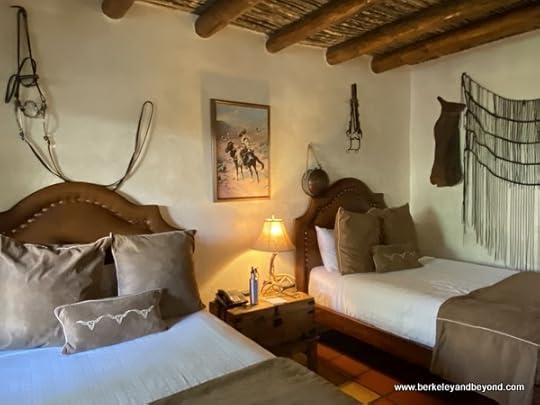 guest room in Los Portales section at Gage Hotel in Marathon, Texas
guest room in Los Portales section at Gage Hotel in Marathon, Texas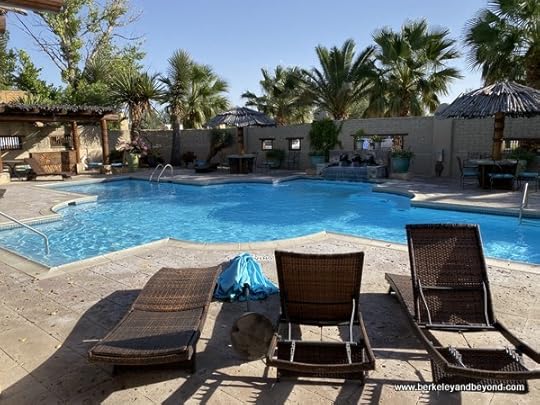 swimming pool for Los Portales section at Gage Hotel in Marathon, Texas
swimming pool for Los Portales section at Gage Hotel in Marathon, Texas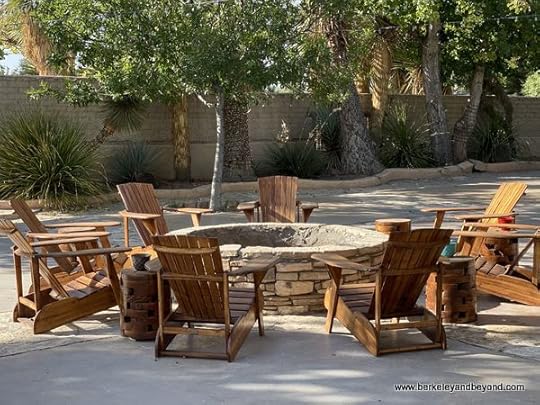 Adirondack chairs around fire pit at Gage Hotel in Marathon, Texas
Adirondack chairs around fire pit at Gage Hotel in Marathon, TexasAbout a block away, the Captain Shepard House offers five guest rooms and is used for group bookings. Built in 1890, the two-story, classic colonial-style home was fully restored in 2012. Two rooms share a bath, and the rest have lovely stone-tile bathrooms. There was a cold snap in the area when I stayed here, and a problem getting hot water in the house culminated in my group not getting a morning shower. But we survived. Everyone shares a sitting room, TV room, dining room, and butler’s kitchen. A Carriage House in the rear offers two additional guest rooms.
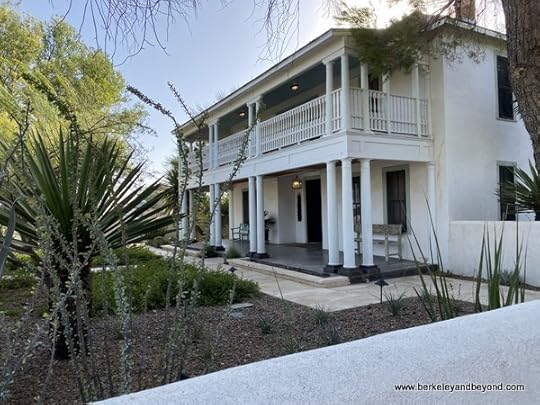 exterior of Captain Shepard House at Gage Hotel in Marathon, Texas
exterior of Captain Shepard House at Gage Hotel in Marathon, Texas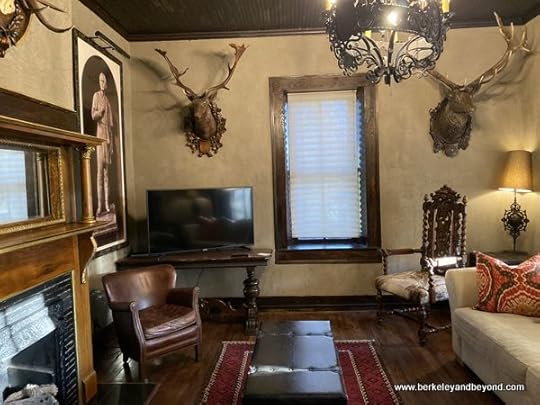 parlor at Captain Shepard House at Gage Hotel in Marathon, Texas
parlor at Captain Shepard House at Gage Hotel in Marathon, Texas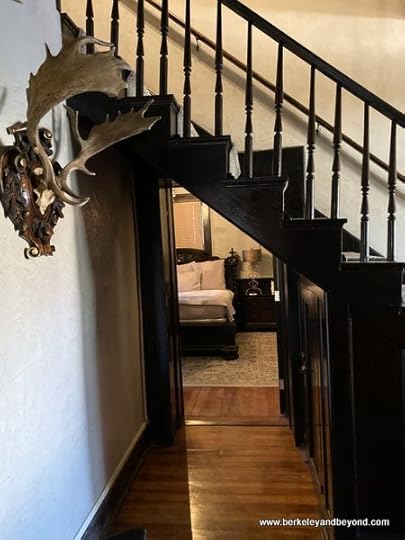 guest room at Captain Shepard House at Gage Hotel in Marathon, Texas
guest room at Captain Shepard House at Gage Hotel in Marathon, TexasThe White Buffalo saloon makes lovely drinks and is especially nice when it's not crowded and you can chat up the bartender, but it’s also fun when it is jammed and festive. Margaritas are primo here, and a fine dining menu is available.
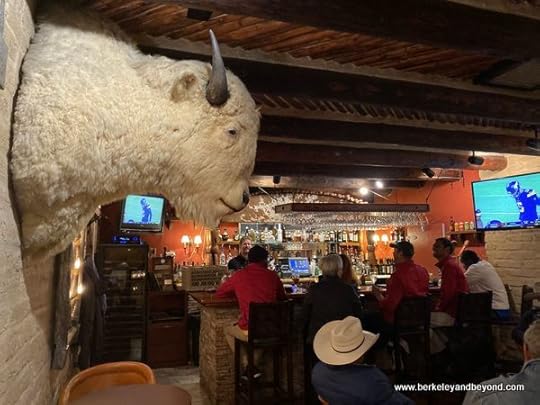 The White Buffalo saloon at Gage Hotel in Marathon, Texas
The White Buffalo saloon at Gage Hotel in Marathon, TexasServing Texas-inspired specialties with a gourmet twist, the award-winning 12 Gage Restaurant offers a refined seasonal menu that uses high-quality local ingredients, including herbs grown in the Gage Gardens and local wild game, beef, and fowl. Seating is available both indoors and out, but the way to go is inside, where you can enjoy the fireplace, cowboy chic décor, and art while seated in comfortable leather chairs. An extensive wine list is available along with signature cocktails such as the lovely Blood Orange Margarita I enjoyed. And it seems a no-brainer to order steak--think tasty Native American Beef Tenderloin Filet or tender Wagyu Strip Steak--but surprisingly fresh Columbia River salmon is also on the menu. And do save some room for a delicious housemade dessert.
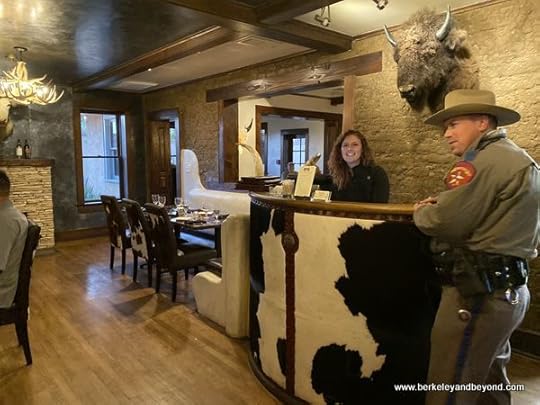 desk at 12 Gage Restaurant at Gage Hotel in Marathon, Texas
desk at 12 Gage Restaurant at Gage Hotel in Marathon, Texas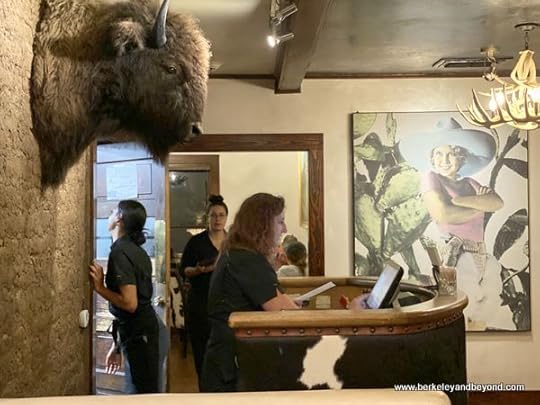 desk at 12 Gage Restaurant at Gage Hotel in Marathon, Texas
desk at 12 Gage Restaurant at Gage Hotel in Marathon, Texas Blood Orange Margarita at 12 Gage Restaurant at Gage Hotel in Marathon, Texas
Blood Orange Margarita at 12 Gage Restaurant at Gage Hotel in Marathon, Texas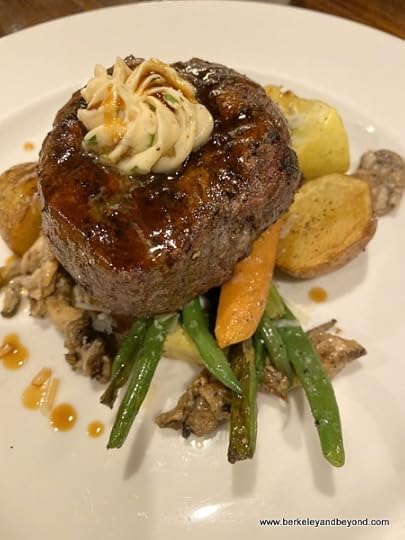 Native American Beef Tenderloin Filet at 12 Gage Restaurant
Native American Beef Tenderloin Filet at 12 Gage Restaurant at Gage Hotel in Marathon, Texas [image error]
Located down the street a tad, the bright, casual V6 Coffee Bar cafe offers espressos and a breakfast menu that includes avocado toast, oatmeal, and an egg sandwich. A cute children’s menu offers just a few items on a tiny card. I was not sorry I ordered the biscuits and jalapeno gravy with sausage. Yum, yum.
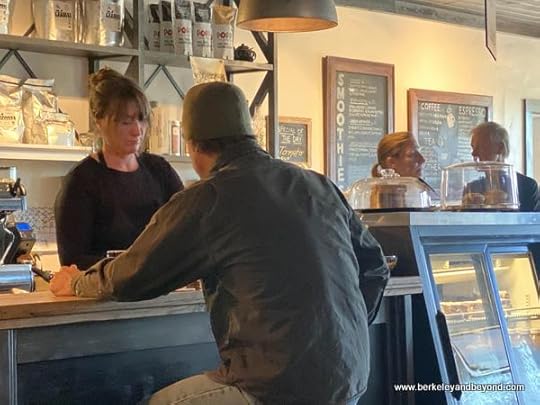 counter at V6 Coffee Bar at Gage Hotel in Marathon, Texas
counter at V6 Coffee Bar at Gage Hotel in Marathon, Texas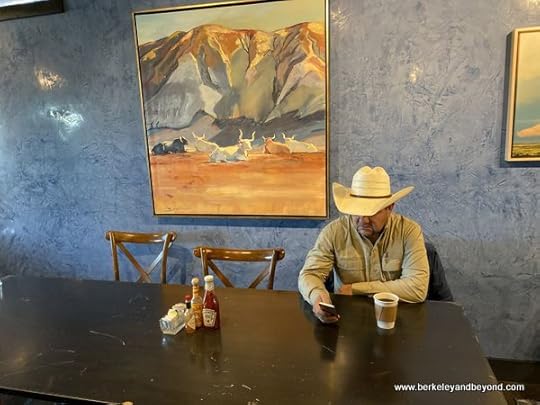 cowboy checks his phone at V6 Coffee Bar at Gage Hotel in Marathon, Texas
cowboy checks his phone at V6 Coffee Bar at Gage Hotel in Marathon, Texas kids' menu at V6 Coffee Bar at Gage Hotel in Marathon, Texas
kids' menu at V6 Coffee Bar at Gage Hotel in Marathon, TexasThe Gage Gardens are located several blocks away. The distance is walkable, but plenty of parking is also available. This 27-acre park includes a small rose garden, a lavender field, and several trails. Indigenous plants are found throughout.
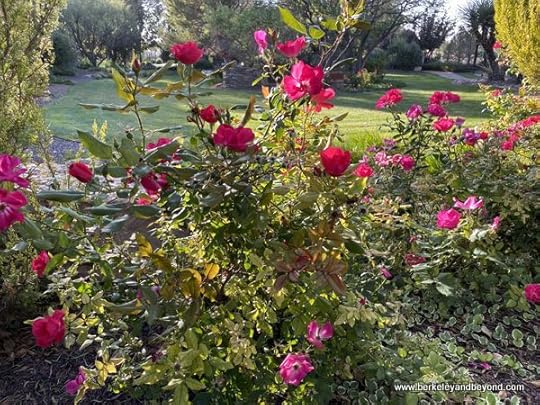 red roses in Gage Gardens at Gage Hotel in Marathon, Texas
red roses in Gage Gardens at Gage Hotel in Marathon, Texas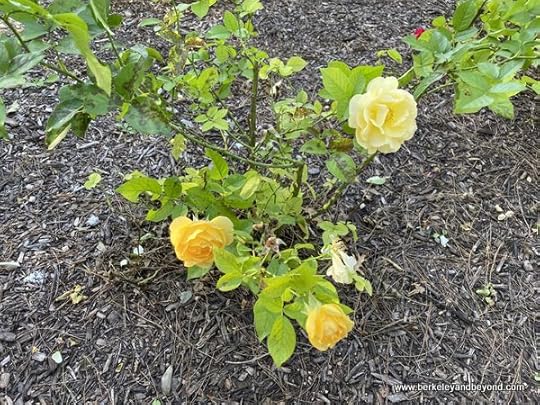 yellow roses in Gage Gardens at Gage Hotel in Marathon, Texas
yellow roses in Gage Gardens at Gage Hotel in Marathon, Texas Texas sage in Gage Gardens at Gage Hotel in Marathon, Texas
Texas sage in Gage Gardens at Gage Hotel in Marathon, TexasItinerary for road trip through West Texas.
Things to do in El Paso.
Great ideas for travel adventures in California and the U.S. and around the world.
images ©2020 Carole Terwilliger Meyers
Published on April 02, 2020 14:20
March 25, 2020
Fort Davis, West Texas: Fort Davis National Historic Site; things to do
Fort Davis National Historic Site 4 miles NW of town. (432) 426-3224. Daily 8am-5pm. Fee.
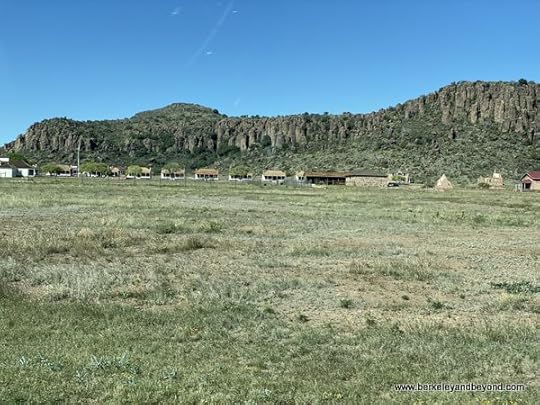 overview of Fort Davis National Historic Site in Fort Davis, West Texas
overview of Fort Davis National Historic Site in Fort Davis, West TexasThe volcanic Davis Mountains--the most extensive mountain range in Texas--and this historic fort and appear like a mirage after driving a while through the vast, empty, parched desert that surrounds the area. Rocky outcroppings were once home to Apache Indians, who made continuous raids on the soldiers. The U.S. Army tamed the wild Texas frontier here and opened it up for settlement. Fort Davis is one of the best surviving examples in the Southwest of an Indian Wars' frontier military post. This strategically located fort protected emigrants, mail coaches, and freight wagons on the Trans-Pecos portion of the San Antonio-El Paso Road and the Chihuahua Trail from 1854 to 1891. The fort was also home to the Buffalo Soldiers, who, even though they were highly praised, ran into prejudice and racial disharmony and resided in segregated barracks. The fort was abandoned in 1891 and became a National Park in 1961. A small museum is inside the visitor center.
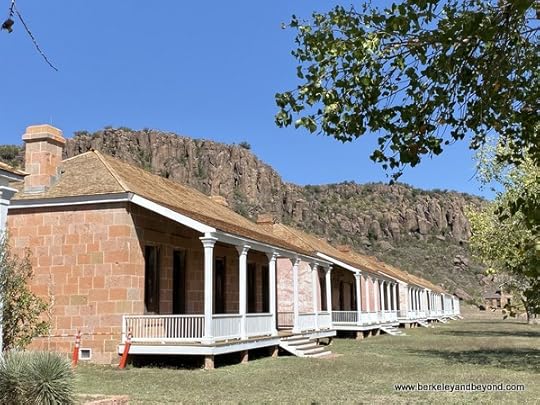 buildings at Fort Davis National Historic Site in Fort Davis, West Texas
buildings at Fort Davis National Historic Site in Fort Davis, West Texas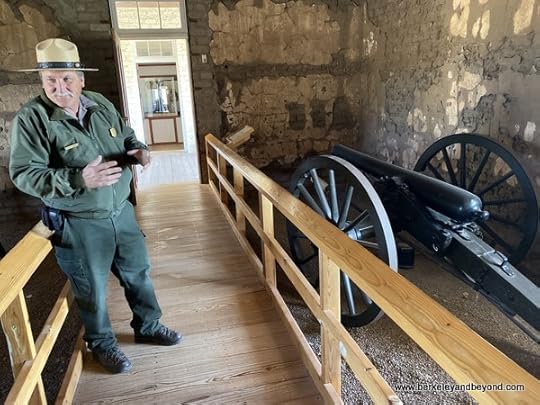 John Heiner, Chief of Interpretation, talks about a cannon at Fort Davis National Historic Site
John Heiner, Chief of Interpretation, talks about a cannon at Fort Davis National Historic Site in Fort Davis, West Texas
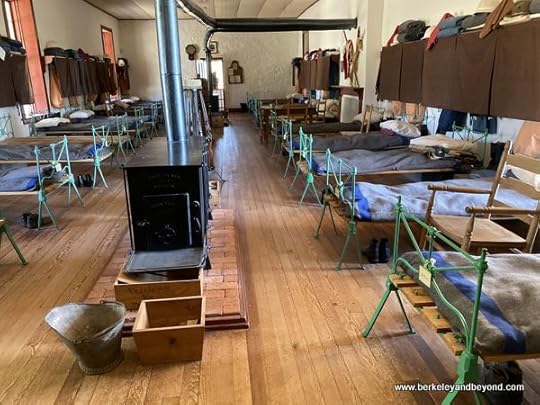 Buffalo Soldier barracks at Fort Davis National Historic Site in Fort Davis, West Texas
Buffalo Soldier barracks at Fort Davis National Historic Site in Fort Davis, West Texas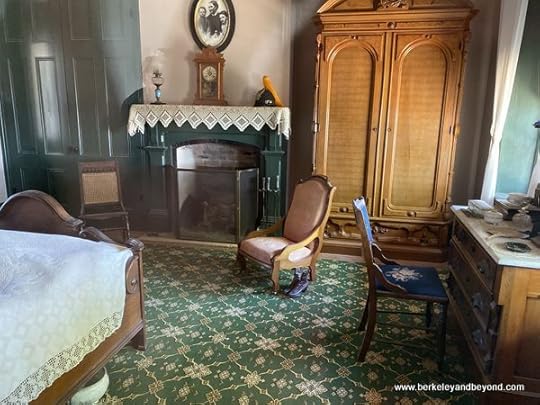 Officers Quarters at Fort Davis National Historic Site in Fort Davis, West Texas
Officers Quarters at Fort Davis National Historic Site in Fort Davis, West TexasMore things to do in Fort Davis.
Itinerary for road trip through West Texas.
Things to do in El Paso.
Great ideas for travel adventures in California and the U.S. and around the world.
images ©2020 Carole Terwilliger Meyers
Published on March 25, 2020 13:49
March 12, 2020
Fort Davis, West Texas: Overnight stay in Davis Mountains State Park; hotel review; restaurant review; things to do
Overnight stay in Davis Mountains State Park
Davis Mountains State Park (432) 426-3337. Campsites available.
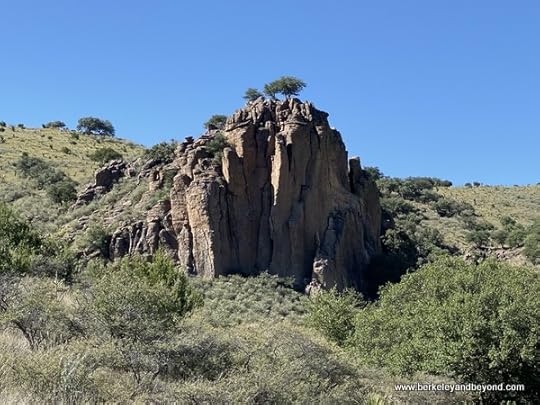 outcrop at Davis Mountains State Park in Fort Davis, Texas
outcrop at Davis Mountains State Park in Fort Davis, TexasDeveloped in the 1930s by the Civilian Conservation Corps, this state park is located a mile above sea level. The increased rainfall and cooler temperatures up there makes for a more rugged terrain that is home to different flora and fauna than is seen in the surrounding Chihuahua Desert. Views are spectacular, and 9 miles of hiking trails await. Meandering up and down mountain ridges and valleys, the 4.5-mile Skyline Drive Trail is particularly scenic. If you don’t have the time or inclination to hike, you can alternatively drive up Skyline Drive road to a mountaintop observation area with 360-degree views. Two bird blinds allow observing the local avian life, and a nature center offers exhibits and a botanical garden.
 scenic overview at Davis Mountains State Park in Fort Davis, Texas
scenic overview at Davis Mountains State Park in Fort Davis, Texas scenic overview at Davis Mountains State Park in Fort Davis, Texas
scenic overview at Davis Mountains State Park in Fort Davis, Texas● Indian Lodge 16453 Park Rd. 3, (432) 426-3254. 39 rooms. Pool, hot tub. Restaurant. No smoking; no pets. Built in 1933 by the CCC, this full-service, pueblo-style hotel inhabits a hillside within the park boundaries. It is constructed with 40-pound earth blocks that form 18-inch-thick walls rising as high as 3 stories. Hand-hewn pine vigas and river cane latilla ceilings add rustic charm to the historic lobby and to room decor. Originally composed of just 15 rooms (they are now known as the highly desirable Historic Rooms), 24 additional rooms were added in the 1960s.
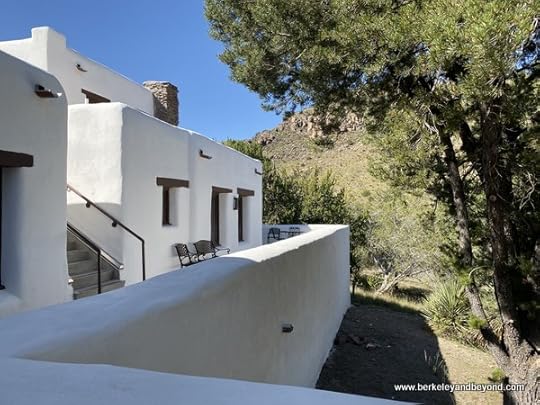 pueblo-style Indian Lodge at Davis Mountains State Park in Fort Davis, Texas
pueblo-style Indian Lodge at Davis Mountains State Park in Fort Davis, Texas pueblo-style Indian Lodge at Davis Mountains State Park in Fort Davis, Texas
pueblo-style Indian Lodge at Davis Mountains State Park in Fort Davis, Texas pueblo-style Indian Lodge at Davis Mountains State Park in Fort Davis, Texas
pueblo-style Indian Lodge at Davis Mountains State Park in Fort Davis, Texas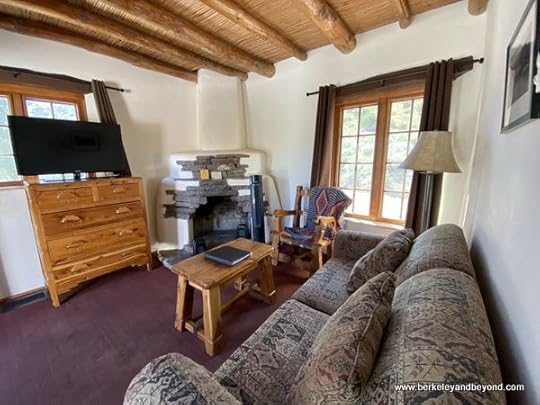 guest room at pueblo-style Indian Lodge at Davis Mountains State Park in Fort Davis, Texas
guest room at pueblo-style Indian Lodge at Davis Mountains State Park in Fort Davis, Texas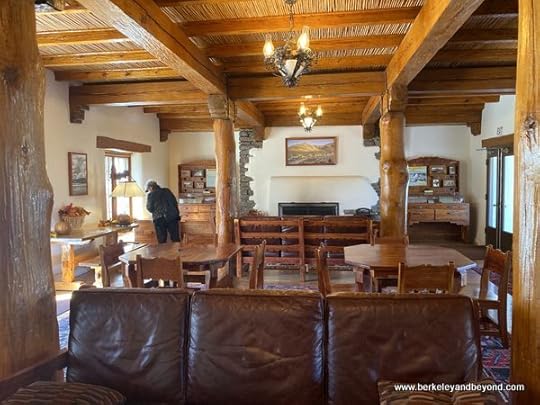 lobby at pueblo-style Indian Lodge at Davis Mountains State Park in Fort Davis, Texas
lobby at pueblo-style Indian Lodge at Davis Mountains State Park in Fort Davis, Texas● Black Bear Restaurant offers breakfast and lunch year-round, Wednesday through Sunday. Along with a view of Keesey Canyon, it offers a simple menu and makes most of the salsas, soups, and desserts in house. I was pleased with my BLT, as were my companions with their burgers. Chicken fried steak and both red and green enchiladas were also options. A mural depicts the area and several black bears.
More things to do in Fort Davis.
Itinerary for road trip through West Texas.
Things to do in El Paso.
Great ideas for travel adventures in California and the U.S. and around the world.
images ©2020 Carole Terwilliger Meyers
Published on March 12, 2020 14:16
March 6, 2020
Fort Davis, West Texas: Perfect Overnight in Unassuming Fort Davis; hotel review; restaurant reviews
Perfect Overnight in Unassuming Fort Davis, Texas
Stone Village Tourist Camp 509 N. State St., (432) 426-3941. Pool. Constructed from converted 1935 CCC buildings, this old-time motel has been spiffed up a bit but you can still park your car right in front of your room. Guests have a choice of renting a regular room with the expected amenities, or in good weather of sleeping in a tiny “camp room” that is fitted into an indention in the building and at the open end is covered just by a screen. The property is cozy, comfy, and clean, with old-time chenille bedspreads and ceiling fans. An inviting pool is shaped a bit like a heart, and several outdoor sitting areas invite relaxation.
 exterior of rooms at Stone Village Tourist Camp in Fort Davis, Texas
exterior of rooms at Stone Village Tourist Camp in Fort Davis, Texas interior of guest room at Stone Village Tourist Camp in Fort Davis, Texas
interior of guest room at Stone Village Tourist Camp in Fort Davis, Texas heart-shaped pool at Stone Village Tourist Camp in Fort Davis, Texas
heart-shaped pool at Stone Village Tourist Camp in Fort Davis, TexasAcross the street, Davis Mountains Nut Company purveys a variety of really good local pecans. My favorite is the one dipped in milk chocolate, which they happened to be making in the back the day I walked in. The shop smelled so good and the staff was so upbeat and friendly that I wound up purchasing some for a snack and some to take back as a gift.
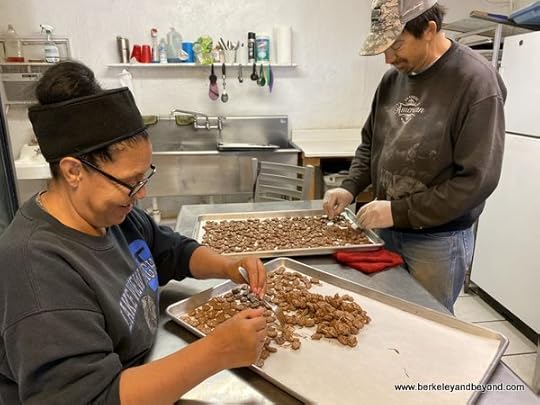 candy-making at Davis Mountains Nut Company in Fort Davis, Texas
candy-making at Davis Mountains Nut Company in Fort Davis, Texas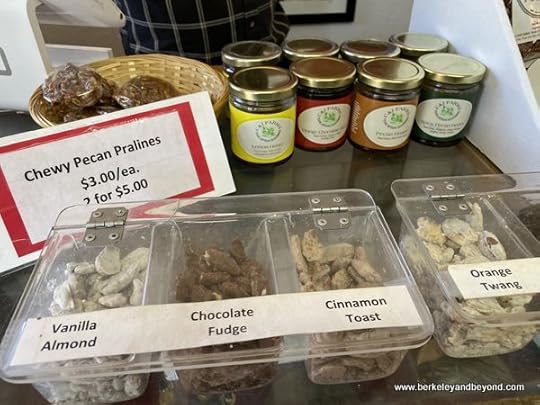 candied pralines for sale at Davis Mountains Nut Company in Fort Davis, Texas
candied pralines for sale at Davis Mountains Nut Company in Fort Davis, TexasDown the street at Blue Mountain Bar & Grill , I enjoyed a cup of delicious tomato-basil bisque with a dinner of Norwegian salmon in a fresh herb cream sauce. Salads, steaks, and a burger as well as root beer-bacon-wrapped quail are also options.
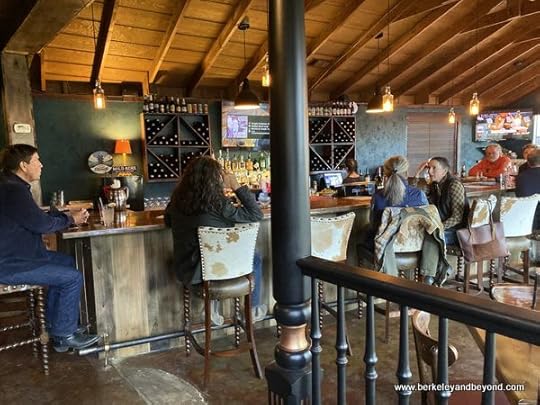 popular bar at Blue Mountain Bar & Grill in Fort Davis, Texas
popular bar at Blue Mountain Bar & Grill in Fort Davis, Texas busy dining room at Blue Mountain Bar & Grill in Fort Davis, Texas
busy dining room at Blue Mountain Bar & Grill in Fort Davis, Texas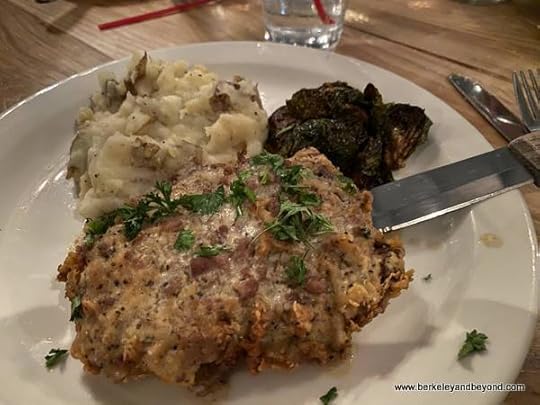 chicken-fried steak at Blue Mountain Bar & Grill in Fort Davis, Texas
[image error]
chicken-fried steak at Blue Mountain Bar & Grill in Fort Davis, Texas
[image error]
Next door, Stone Village Market is the place to go for snacks, provisions, and breakfast. You’ll rub elbows with locals here, because the coffee bar serves the good stuff, and the deli serves up oatmeal, yogurt parfaits, and fragrant housemade cinnamon buns.
 exterior of Stone Village Market in Fort Davis, Texas
exterior of Stone Village Market in Fort Davis, Texas interior of Stone Village Market in Fort Davis, Texas
interior of Stone Village Market in Fort Davis, Texas all about Nitro Iced Coffee at Stone Village Market in Fort Davis, Texas
all about Nitro Iced Coffee at Stone Village Market in Fort Davis, TexasMore things to do in Fort Davis.
Itinerary for road trip through West Texas.
Things to do in El Paso.
Great ideas for travel adventures in California and the U.S. and around the world.
images ©2020 Carole Terwilliger Meyers
Published on March 06, 2020 15:48
Fort Davis, West Texas: Perfect Overnight in Fort Davis; hotel review; restaurant reviews
Perfect Overnight in Fort Davis, Texas
Stone Village Tourist Camp 509 N. State St., (432) 426-3941. Pool. Constructed from converted 1935 CCC buildings, this old-time motel has been spiffed up a bit but you can still park your car right in front of your room. Guests have a choice of renting a regular room with the expected amenities, or in good weather of sleeping in a tiny “camp room” that is fitted into an indention in the building and at the open end is covered just by a screen. The property is cozy, comfy, and clean, with old-time chenille bedspreads and ceiling fans. An inviting pool is shaped a bit like a heart, and several outdoor sitting areas invite relaxation.
 exterior of rooms at Stone Village Tourist Camp in Fort Davis, Texas
exterior of rooms at Stone Village Tourist Camp in Fort Davis, Texas interior of guest room at Stone Village Tourist Camp in Fort Davis, Texas
interior of guest room at Stone Village Tourist Camp in Fort Davis, Texas heart-shaped pool at Stone Village Tourist Camp in Fort Davis, Texas
heart-shaped pool at Stone Village Tourist Camp in Fort Davis, TexasAcross the street, Davis Mountains Nut Company purveys a variety of really good local pecans. My favorite is the one dipped in milk chocolate, which they happened to be making in the back the day I walked in. The shop smelled so good and the staff was so upbeat and friendly that I wound up purchasing some for a snack and some to take back as a gift.
 candy-making at Davis Mountains Nut Company in Fort Davis, Texas
candy-making at Davis Mountains Nut Company in Fort Davis, Texas candied pralines for sale at Davis Mountains Nut Company in Fort Davis, Texas
candied pralines for sale at Davis Mountains Nut Company in Fort Davis, TexasDown the street at Blue Mountain Bar & Grill , I enjoyed a cup of delicious tomato-basil bisque with a dinner of Norwegian salmon in a fresh herb cream sauce. Salads, steaks, and a burger as well as root beer-bacon-wrapped quail are also options.
 popular bar at Blue Mountain Bar & Grill in Fort Davis, Texas
popular bar at Blue Mountain Bar & Grill in Fort Davis, Texas busy dining room at Blue Mountain Bar & Grill in Fort Davis, Texas
busy dining room at Blue Mountain Bar & Grill in Fort Davis, Texas chicken-fried steak at Blue Mountain Bar & Grill in Fort Davis, Texas
[image error]
chicken-fried steak at Blue Mountain Bar & Grill in Fort Davis, Texas
[image error]
Next door, Stone Village Market is the place to go for snacks, provisions, and breakfast. You’ll rub elbows with locals here, because the coffee bar serves the good stuff, and the deli serves up oatmeal, yogurt parfaits, and fragrant housemade cinnamon buns.
 exterior of Stone Village Market in Fort Davis, Texas
exterior of Stone Village Market in Fort Davis, Texas interior of Stone Village Market in Fort Davis, Texas
interior of Stone Village Market in Fort Davis, Texas all about Nitro Iced Coffee at Stone Village Market in Fort Davis, Texas
all about Nitro Iced Coffee at Stone Village Market in Fort Davis, TexasMore things to do in Fort Davis.
Itinerary for road trip through West Texas.
Things to do in El Paso.
Great ideas for travel adventures in California and the U.S. and around the world.
images ©2020 Carole Terwilliger Meyers
Published on March 06, 2020 15:48
March 4, 2020
Fort Davis, West Texas: McDonald Observatory; things to do
McDonald Observatory 16 miles NW of town, (877) 984-7827, (432) 426-3640. Visitor Center and cafe: daily 10am-5:30. Tours daily at 11am & 2pm. Star parties on Tu, F, Sat evenings. Programs $5-$15, under 5 free. Reservations required. No pets.
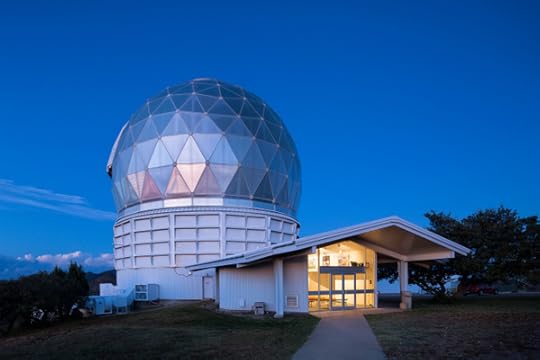 McDonald Observatory in Fort Davis, Texas
McDonald Observatory in Fort Davis, TexasOne of the world’s premiere observatories, this renowned University of Texas at Austin astronomical facility offers daytime tours and spectacular star parties at night. This area of Texas features some of the darkest night skies in the nation (this area is classified as a “Class 1 Dark Sky”--as dark as it gets), permitting clear views of the stars and planets. After the seated portion of the outdoor star party in a amphitheater, visitors move to another area to view the night skies through several observatory telescopes, including the technologically advanced Hobby-Eberly telescope, where people will be asking things like, “Is this the right line for Saturn?” Note that it can get quite cold up on Mt. Locke and Mt Fowlkes, so dress warmly. One generous lady in my group of four treated us all to ponchos, neck scarfs, beanies, and even gloves--all purchased at a nearby dollar store. Star Parties always occur outside--even if it rains. But if it's too cloudy, rainy, windy, dusty, or humid, an indoor program is substituted.
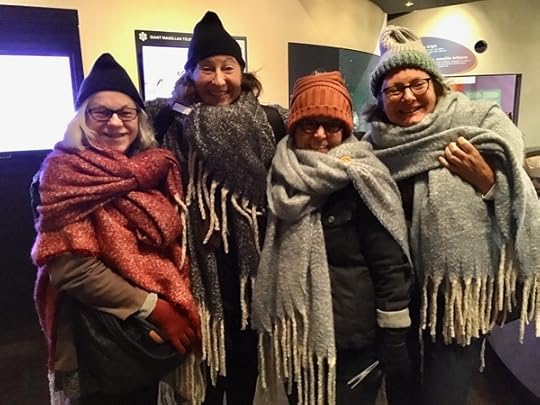 ladies dressed for a star party at McDonald Observatory in Fort Davis, Texas
ladies dressed for a star party at McDonald Observatory in Fort Davis, TexasMore about dark skies.
Itinerary for road trip through West Texas.
Things to do in El Paso.
Great ideas for travel adventures in California and the U.S. and around the world.
first image courtesy of venue; second image, photographer unknown
Published on March 04, 2020 13:50
Carole Terwilliger Meyers's Blog
- Carole Terwilliger Meyers's profile
- 1 follower
Carole Terwilliger Meyers isn't a Goodreads Author
(yet),
but they
do have a blog,
so here are some recent posts imported from
their feed.



